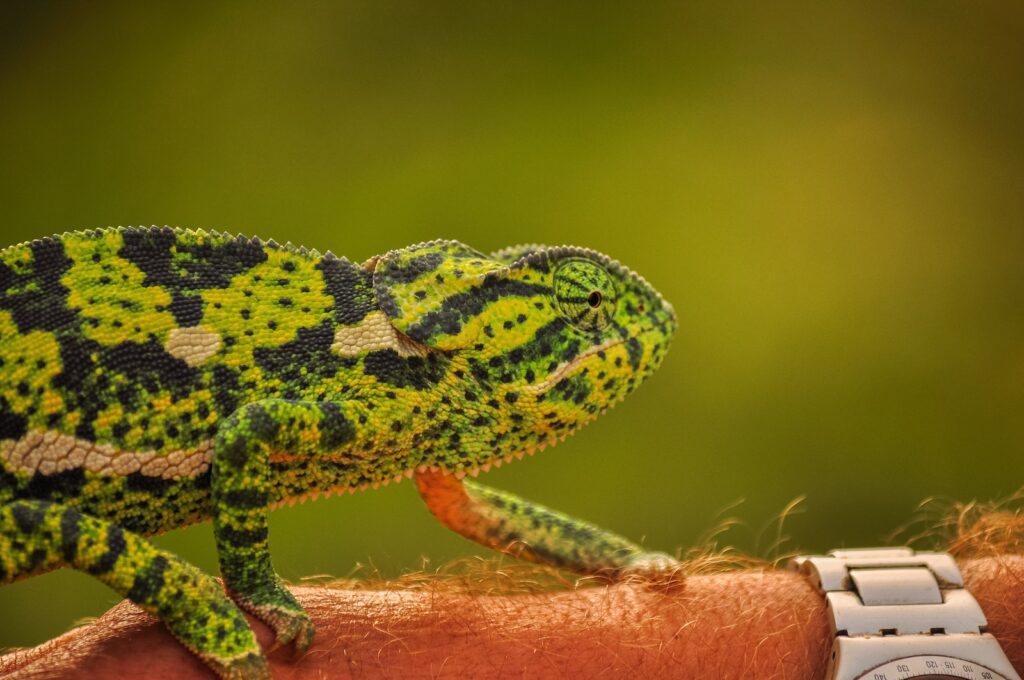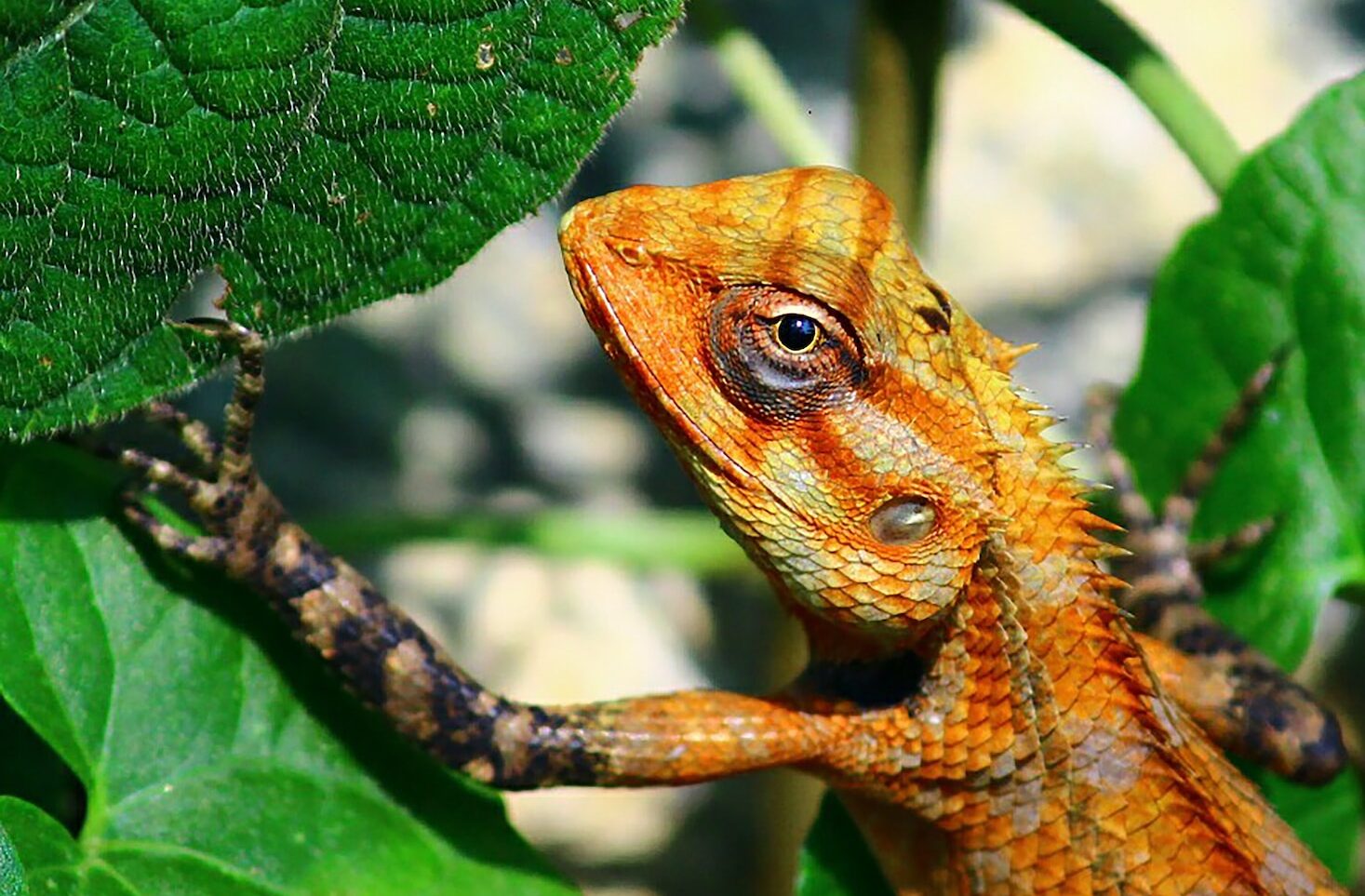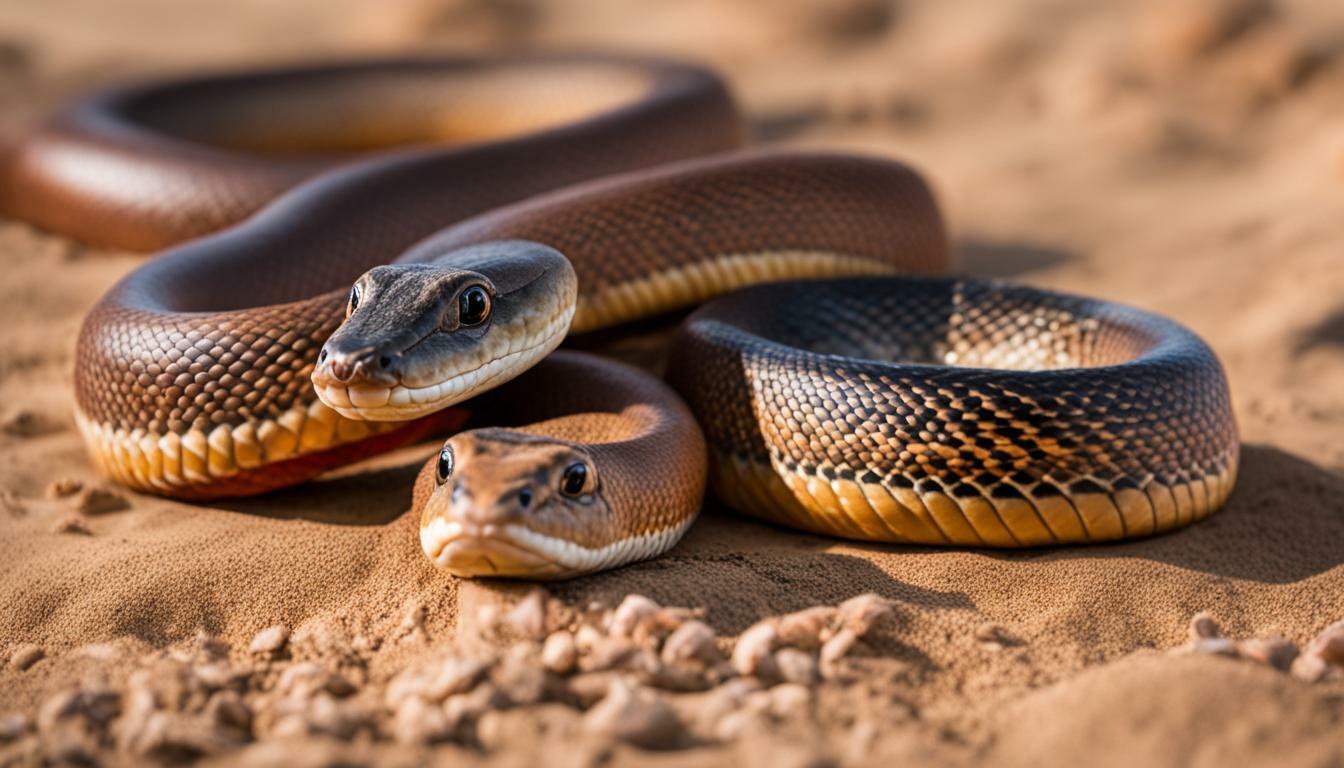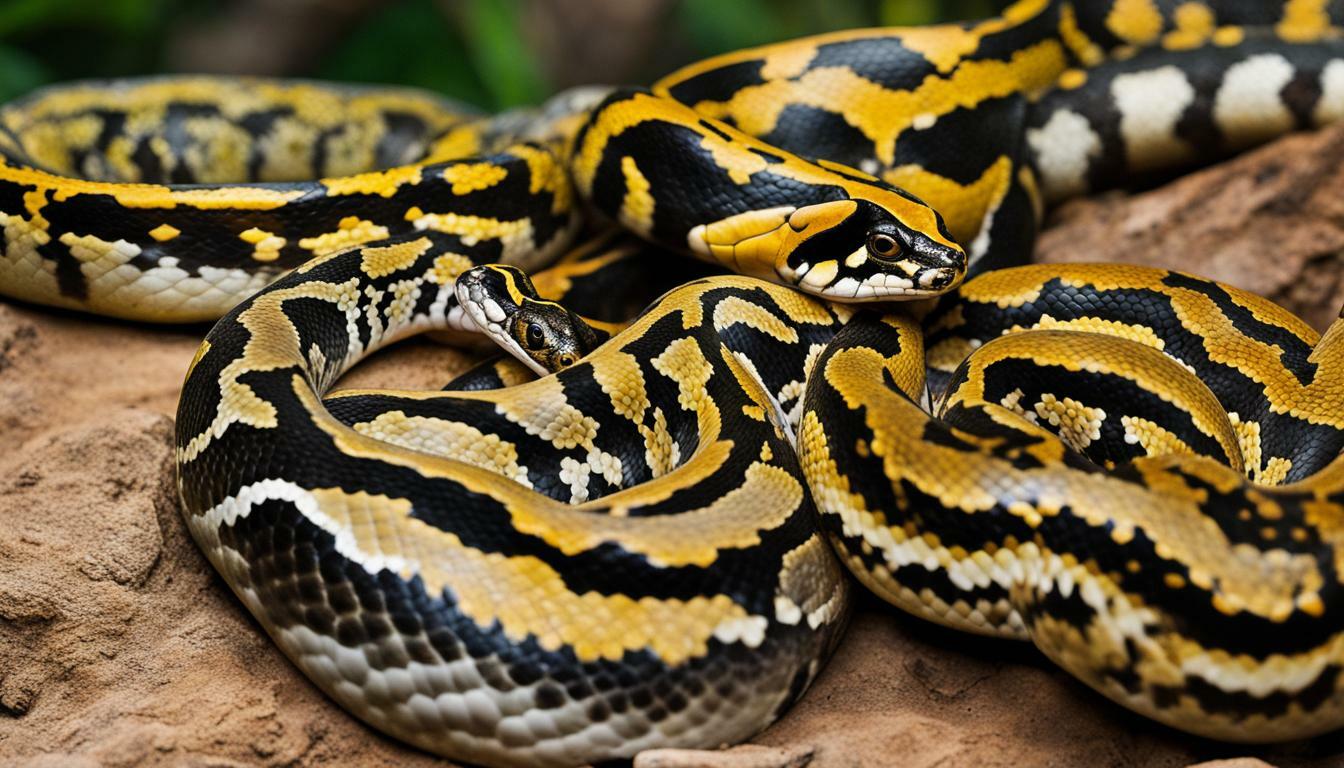Reptiles are fascinating creatures that come in all shapes and sizes. When it comes to iguanas and chameleons, there are noticeable differences that set them apart from each other. From their physical appearance to their habitat preferences, diet, and behavior, these two reptiles have unique characteristics that make them stand out in the animal kingdom.
Key Takeaways:
- Iguanas and chameleons are two distinct reptile species with notable differences
- Iguanas are herbivores and prefer habitats such as tropical forests, while chameleons are carnivores and can be found in various ecosystems
- Chameleons have the remarkable ability to change color according to their surroundings, an adaptation that iguanas lack

Iguana Characteristics
Iguanas are fascinating reptiles known for their unique physical features and behavior. Here are some notable iguana characteristics:
| Physical Characteristics | Behavioral Characteristics |
|---|---|
| Iguanas have a long tail, strong legs, and sharp claws to aid in climbing and defense | They are often territorial and known to exhibit aggressive behavior towards other iguanas or animals that they perceive as threats |
| Their skin is covered in small scales and they can change color slightly, but not to the degree of chameleons | They are diurnal, meaning they are active during the day and sleep at night |
| Male iguanas are larger and have more prominent dorsal crests than females | They communicate through a combination of head bobs, push-ups, and tail movements |
Iguanas come in a range of sizes and colors, depending on the species. Some can grow up to 6 feet in length, while others are small and compact. Their diet consists of vegetation, including leaves, fruits, and flowers, and they are often found in tropical or subtropical regions.
Green Iguanas
One of the most well-known species of iguanas is the green iguana, which can grow up to 6 feet long and weigh over 11 pounds. They are typically bright green in color, although their skin can change to a darker shade in response to stress or changes in temperature. They are native to Central and South America and are often kept as pets.
Chameleon Characteristics
If you thought iguanas were unique, wait until you learn about chameleons! These reptiles have many fascinating characteristics that make them stand out in the animal kingdom.
One of the most well-known chameleon characteristics is their ability to change color. Chameleons can adjust their skin pigmentations to match their surroundings, making them almost invisible to predators or prey. This adaptation is due to specialized cells called chromatophores, which expand and contract to produce different colors. Some species can even change colors as a response to their mood or emotions!
Another distinctive feature of chameleons is their eyes. Chameleons have independently rotating eyes that can move independently of one another, allowing them to look in two directions at the same time. This gives them a 360-degree view of their surroundings and helps them spot potential predators or prey.
Chameleons also have a unique body structure. Their feet have fused toes that form two toes facing in one direction and three toes facing in the opposite direction, giving them a vice-like grip on branches or twigs. Their long, sticky tongue can extend more than twice the length of their body to capture insects from a distance.
Chameleons are also known for their slow and deliberate movements. They may sit motionless for hours, waiting for unsuspecting prey to stumble by. However, when threatened, they can move quickly and dart away to safety.
Overall, the chameleon’s unique physical and behavioral characteristics make them one of the most interesting and captivating reptiles in the world.
Iguana Habitat and Diet
Iguanas are unique reptiles that live in various habitats around the world. They are usually found in tropical and subtropical forests, deserts, and coastal regions. These habitats provide them with the right temperatures and humidity levels they need to thrive.
One of the main reasons iguanas are found in these habitats is because of their diet. They are primarily herbivores, meaning their diet is made up of plants, fruits, and flowers. Some species of iguanas are known to eat insects and small animals, but this is not common.
| Type of food | Examples |
|---|---|
| Leaves and flowers | Hibiscus, dandelion greens, rose petals |
| Fruits | Mango, papaya, strawberries |
| Vegetables | Squash, sweet potato, green beans |
Iguanas are known to be opportunistic feeders, which means they will eat whatever plant material is available in their habitat. They also have unique digestive systems that allow them to extract as much nutrition as possible from their food.
Overall, iguanas are fascinating reptiles that have adapted to a range of habitats and diets. They are an important part of their ecosystems and play a vital role in maintaining the balance of nature.
Chameleon Habitat and Diet
Chameleons are found in a range of habitats, from rainforests and deserts to savannas and mountains. They are commonly found in Africa, Madagascar, and other parts of the world with warm climates. Some species live in trees, while others live on the ground or in burrows. Their habitats are often characterized by high humidity and temperatures, with plenty of vegetation for cover and camouflage.
Chameleons are strict carnivores, feeding mainly on insects and other small invertebrates. Their diet may include crickets, grasshoppers, spiders, and even small lizards. They are known for their long, sticky tongues, which they use to catch their prey with lightning-fast strikes. Some species also drink water droplets off leaves or other surfaces.
Chameleons have unique physical adaptations that help them hunt and survive in their habitats. For example, their feet are adapted for gripping branches and other surfaces, and their eyes can move independently to scan their surroundings for prey and predators. Their color-changing ability also helps them blend in with their environment and avoid detection.
Iguana Behavior vs Chameleon Behavior
While iguanas and chameleons share some similarities in their behaviors, they also have some notable differences. One of the most apparent dissimilarities is their reaction to threats. Iguanas are known for their aggressive behavior when they feel threatened. They may puff up their bodies and whip their tails, lashing out at their perceived attacker. In contrast, chameleons have a more passive approach to danger. They will typically freeze and blend into their surroundings, relying on their camouflage to keep them safe.
Another key difference in their behavior is their social interactions. Iguanas are primarily solitary animals, only coming together during mating season. They are territorial and will defend their space against other iguanas. Chameleons, on the other hand, may live in groups or pairs, depending on the species. They communicate with each other through body language and color changes, displaying dominance or submissiveness.
Both iguanas and chameleons are known for their basking behaviors. Basking is when they sit in the sun to warm themselves up and regulate their body temperature. However, iguanas tend to bask for longer periods, sometimes for hours on end. Chameleons, on the other hand, will bask for shorter periods and may retreat to the shade sooner to avoid overheating.
Finally, while both iguanas and chameleons are capable of swimming, their swimming behaviors differ. Iguanas are excellent swimmers and will take to the water to escape predators or search for food. They are also known to dive and stay underwater for up to 30 minutes. Chameleons, on the other hand, are not natural swimmers and may struggle in the water. They are more adapted to living in trees, using their gripping feet and prehensile tail to move around.
In conclusion, while iguanas and chameleons may seem similar at first glance, their behaviors reveal distinct differences. From their reaction to threats to their social interactions and basking and swimming behavior, these reptiles have evolved unique strategies for survival in their respective environments.
Conclusion
Overall, iguanas and chameleons are fascinating creatures with unique characteristics that set them apart from each other. From their physical appearance, habitats, diets, and behaviors, these reptiles have their own distinct traits that make them stand out in the reptile world.
Iguanas are known for their large size, sharp claws, and impressive strength, which makes them skilled climbers. They prefer to live in tropical areas and feed on a variety of plants, fruits, and insects. On the other hand, chameleons are smaller in size and have the incredible ability to change their color to blend in with their surroundings. They are well-adapted to living in diverse ecosystems and feed on insects and small animals, using their long, sticky tongues to catch prey.
When it comes to behavior, iguanas and chameleons have different social dynamics and survival tactics. Iguanas tend to be more solitary and territorial, while chameleons are often social and can communicate with each other through various visual cues. Both species have developed unique ways of adapting to their environments and avoiding predators.
Appreciating the Beauty of Nature’s Creations
In conclusion, learning about the differences between iguanas and chameleons gives us a deeper appreciation for the diversity and beauty of nature’s creations. Each species has its own unique traits and characteristics that make them fascinating creatures in their own right. By understanding and respecting these differences, we can better protect and preserve these incredible reptiles for generations to come.
FAQ
Q: What are the main differences between iguanas and chameleons?
A: Iguanas and chameleons have several key differences. While iguanas are known for their larger size and herbivorous diet, chameleons are smaller and have the ability to change color. Additionally, iguanas tend to have a more aggressive behavior compared to the more elusive nature of chameleons.
Q: What are the characteristic traits of iguanas?
A: Iguanas are characterized by their long, slender bodies and sharp claws. They can grow up to several feet in length and are known for their vibrant and often green coloration. They are primarily herbivores and rely on their strong jaws and teeth to eat plants and leaves.
Q: What makes chameleons unique?
A: Chameleons are known for their ability to change color, which helps them blend into their surroundings and communicate with other chameleons. They have specialized eyes that can move independently and a prehensile tail that allows them to grip onto branches. Chameleons also have a projectile tongue that they use to catch insects for their diet.
Q: What kind of habitat do iguanas prefer?
A: Iguanas are typically found in warm tropical regions such as Central and South America. They prefer habitats with plenty of sunlight, such as forests, savannas, and even urban areas. Iguanas are excellent climbers and are often found in trees or near bodies of water.
Q: Where do chameleons live?
A: Chameleons are native to various regions including Africa, Madagascar, and parts of Asia and Europe. They are most commonly found in rainforests, savannas, and deserts. Chameleons rely on trees and shrubs for shelter, as well as to find their preferred prey of insects.
Q: How do iguana behavior and chameleon behavior differ?
A: Iguanas are generally more active and social compared to chameleons. They are known to defend their territory and can display aggressive behavior when threatened. Chameleons, on the other hand, are more solitary and tend to be more passive in their interactions. They rely on their color-changing ability as a form of communication and defense.
 Skip to main content
Skip to main content


